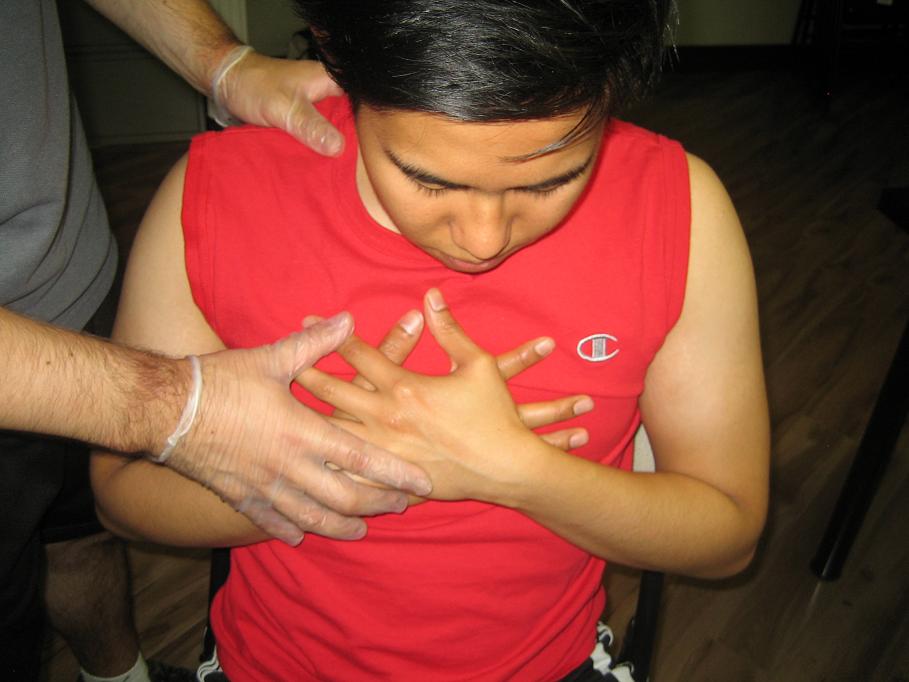Among infants, choking often occurs if they place small-sized objects in their mouths that can become stuck. It can also be brought about by food that becomes stuck in the airway.
Back blows for babies (below 1-year old)
In case an infant is able to cough, encourage to do so to help clear the foreign object. If the child is distressed and could not cough, cry or breathe, you have to deliver back blows.
- Position the infant facing down transversely or along your lap with the head at a lower position than their bottom.
- Hold the head of the baby from below by positioning your thumb on one side of the jaw and one or two fingers on the other side. This will ensure that the airway is open.
- Take care not to press on the neck of the soft skin beneath the lower jaw.
- Deliver 5 firm blows to the back in between the shoulder blades using the heel of your hand.
- Pause during each blow to check if the blockage has cleared. Do not attempt to thrust your fingers into the mouth of the child except you can clearly see and grasp the object, since you might only drive it further inside.
In case the airway is still blocked, perform 5 chest thrusts.
Chest thrusts for infants below 1-year old
Among infants below 1-year old, the chest thrust is performed in an emergency to clear up any blockage in the airway. Remember not to use the abdominal thrusts among infants below a year old.
- Position the infant facing up along your arm and rest your arm throughout or across the lap as support.
- Support the back of the head by cupping the lower part using your hand.
- Pinpoint the breastbone and position 2 fingers on the lower half of it.
- Deliver 5 chest thrusts using your fingers to compress the chest about a third of its depth.
- Check if the blockage is removed. Do not push your fingers into the mouth unless you can see and reach the object since this might only draw it further inside.
In case the airway is blocked despite performing 3 cycles of back blows as well as chest thrusts, you have to call for emergency assistance. Continue to execute the cycle of back blows and chest thrusts until the emergency team arrives.
Quick Note / Disclaimer
The material posted on this page on choking among infants is for learning and educational purposes only. To learn to recognize and manage choking among infants, register for a first aid and CPR course with Mississauga First Aid.

